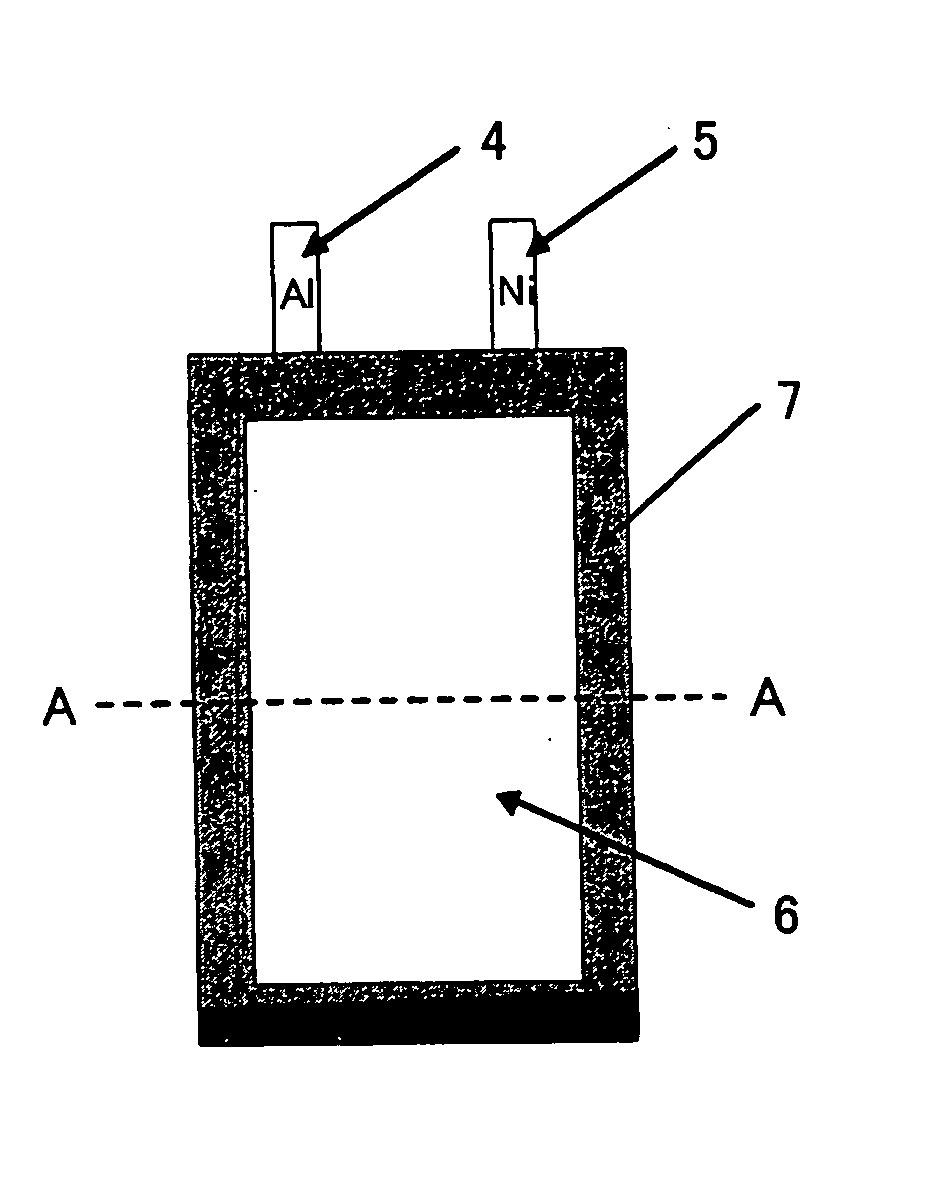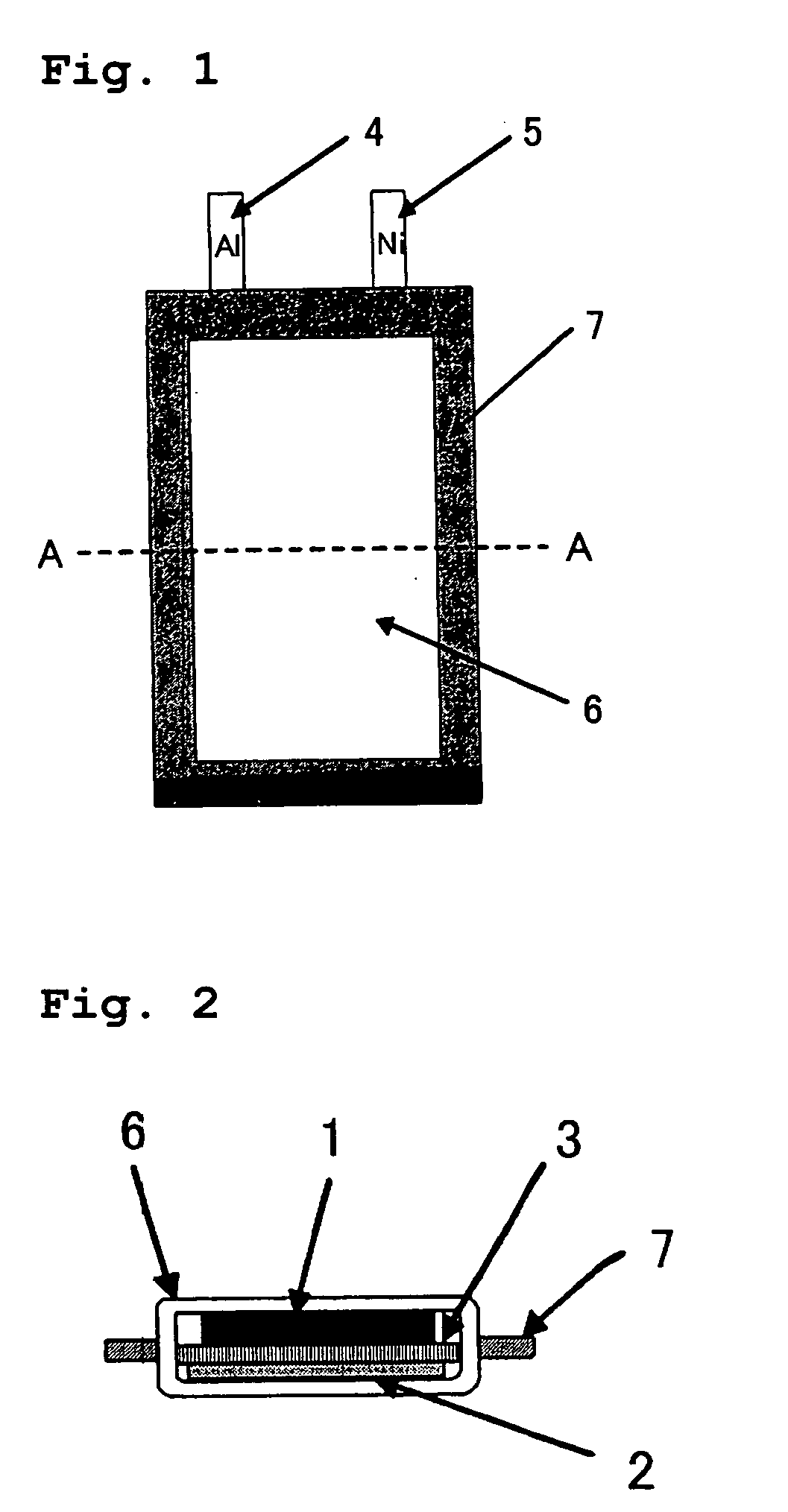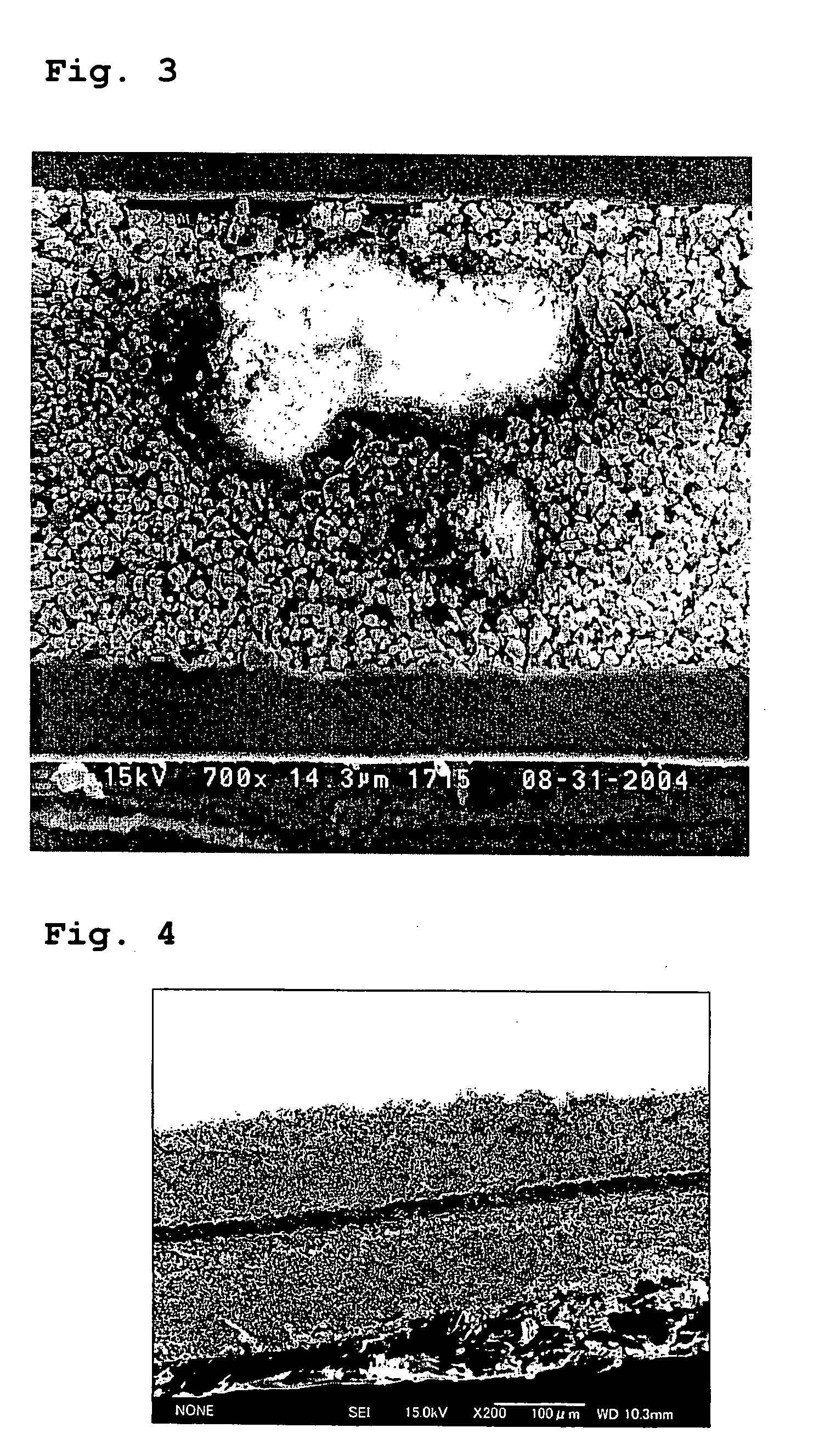Lithium secondary battery
- Summary
- Abstract
- Description
- Claims
- Application Information
AI Technical Summary
Benefits of technology
Problems solved by technology
Method used
Image
Examples
experiment 1
[0071] Experiment 1
[0072] Preparation of Positive Electrode
[0073] 500 g of a 6 weight % N-methyl-pyrrolidone solution of polyvinylidene fluoride, 30 g of acetylene black, and 1.8 kg of 1.5-mm diameter beads made of ZrO2 were filled in a Al2O3 container with a 2 liter capacity of a bead mill and agitated by rotating a disk-shaped Al2O3 agitating blade at 1500 rpm for 15 minutes, and thereafter all the ZrO2 beads were removed. Thus, a positive electrode paste was obtained in which acetylene black powder was uniformly mixed and dispersed in the N-methyl-pyrrolidone solution of polyvinylidene fluoride.
[0074] Next, Li2CO3 and CoCO3 were mixed in a mortar so that the mole ratio of Li and Co became 1:1. The mixture was sintered in an air atmosphere at 800° C. for 24 hours and thereafter pulverized to obtain a lithium-cobalt composite oxide represented as LiCoO2 and having an average particle size of about 7 μm. The BET specific surface area of the resultant LiCoO2 was 0.47 m2 / g.
[0075] T...
experiment 2
[0086] Experiment 2
[0087] Battery B1 was fabricated in the same manner as in Experiment 1 except that lithium carbonate powder was not added in preparing the positive electrode as in Experiment 1.
experiment 3
[0088] Experiment 3
[0089] Batteries B2 and B3 were fabricated in the same manners as in fabricating Batteries A1 and B1, respectively, except that carbon dioxide was not dissolved in preparing the electrolyte solutions as in Batteries A1 and B1.
PUM
 Login to View More
Login to View More Abstract
Description
Claims
Application Information
 Login to View More
Login to View More - R&D
- Intellectual Property
- Life Sciences
- Materials
- Tech Scout
- Unparalleled Data Quality
- Higher Quality Content
- 60% Fewer Hallucinations
Browse by: Latest US Patents, China's latest patents, Technical Efficacy Thesaurus, Application Domain, Technology Topic, Popular Technical Reports.
© 2025 PatSnap. All rights reserved.Legal|Privacy policy|Modern Slavery Act Transparency Statement|Sitemap|About US| Contact US: help@patsnap.com



